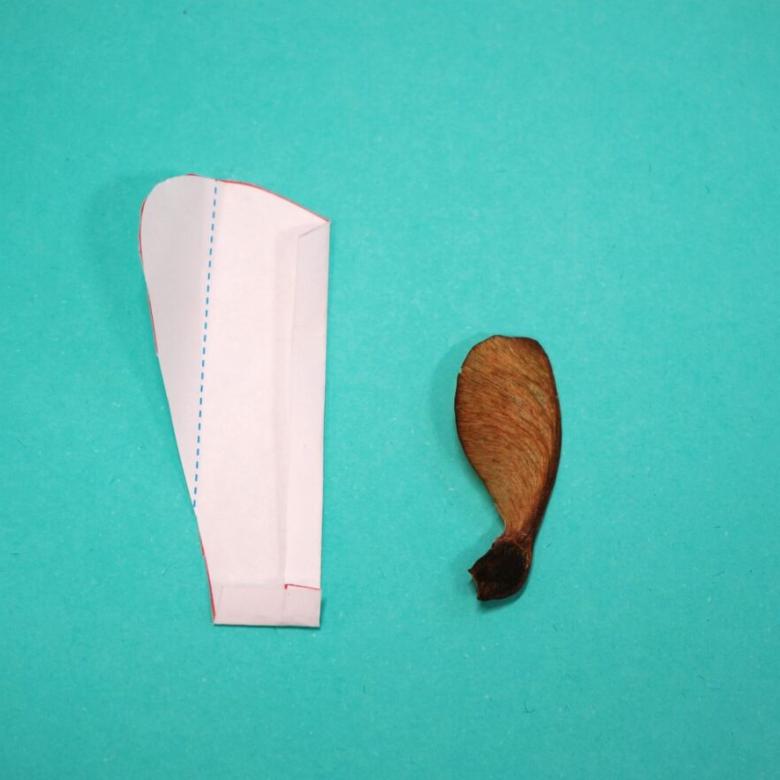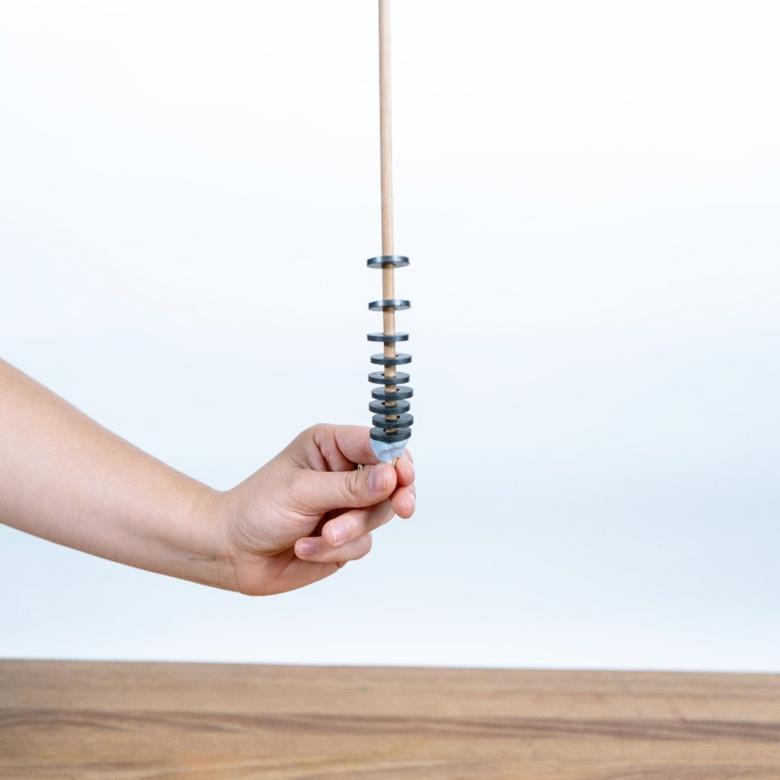You’ll need
- 2 lengths of copper wire, each about 30 cm long
- A wooden clothes peg (not the kind with a metal spring)
- A 9 V battery
- A snap-type battery holder for the 9 V battery (at electronic shops or online for about $2)
- An electronic buzzer (at electronic shops or online for about $5)
What to do
- Wrap a piece of wire around one leg of the peg, leaving about 3 cm of wire sticking out to one side.
- Repeat this on the other leg of the peg. The end of the second piece of wire should be sticking out to the other side. The wires shouldn’t touch when the peg’s legs aren’t squeezed. The wires should touch when the peg’s legs are squeezed.
- Make a little hook in each end of the copper wire.
- Snap the battery holder onto the battery.
- Connect the black wire of the battery holder to the black wire of the buzzer. Watch the video to see how to connect the wires.
- Connect the red wire from the battery holder to the wire on one leg of the peg.
- Connect the red wire from the buzzer to the wire on the other leg of the peg.
- Squeeze the peg’s legs.
Questions to ask
Why does the buzzer sound when you squeeze the peg’s legs?
Does the wire have to be copper? Try using another type of wire. Try using a piece of string.
What's happening
Squeezing the legs of the peg makes the copper wires touch, which closes the electric circuit. A closed electric circuit is needed for electrical current to flow. The battery supplies electrical power to the circuit. The electricity flowing in the circuit causes vibrations inside the buzzer. These vibrations make the sound you hear when the peg is squeezed.
This electric circuit is made up of a battery, an electric buzzer and wires. The wires – made of copper – are good conductors of electricity. The copper wires allow electrons to flow through the circuit. This is called an electrical current. (Electrons are the subatomic particles that carry electrical charge in wires.) An electrical current is measured in amperes (known by the symbol A). Current is a measure of the number of electrons passing through a conductor. In this circuit, the battery supplies the voltage. Voltage is the potential energy that drives the current through the circuit. It’s measured in volts (known by the symbol V).
In this circuit, the wires on the legs of the peg act as a switch to open and close the circuit. When the legs of the peg are squeezed, the wires on the opposite legs touch each other. This closes the circuit, allowing electrons to move through the circuit and make the buzzer sound. The sound happens because the electricity passing through the buzzer causes it to vibrate. When the legs of the peg aren’t squeezed, the wires on the separate legs don’t touch each other. This means the circuit is open, so the electrons can’t move through the circuit, including the buzzer. So the buzzer doesn’t sound.
(Sound of bubbles popping)
Tim: Hi everyone, my name’s Tim and I'm from the Questacon Science Squad. Today I’m going to show you how you can be wired for sound.
To do this we need a few things.
You need:
- a 9V battery plus a 9V battery holder
- a small buzzer. You can get these from electronic stores
- a wooden peg and,
- two pieces of copper wire that are about 20 centimetres long
Now, the first step is to take your wooden peg and a piece of copper and wind it around and around the edge of the peg here, just like this.
(Tim is winding a piece of copper around each side of the peg)
There we go.
So now we have the two pieces of copper wire, what we need to do is we’re going to bend these pieces of copper wire and put a little bit of a hook in them, like this.
(Camera zooms in to show Tim bending the ends of the copper wire to make hooks)
And I’ll put another one over the other side, if we have a look in closely here, you can see that the pieces of copper wire are close together but they’re not touching.
(Camera zooms in to show the peg and wires)
You want them as close as possible, like that. Now it’s just a matter of hooking them up to the wire here, and folding that over, making sure it’s nice and tight.
(Tim connects one of the hooks to the 9V battery using the black wire)
Doing the same on this one here
(Tim connects the other hook to the 9V battery using the red wire)
There we go. Put it through, pulling it nice and tight. And if you grab the base of the wooden peg, it makes a buzzing noise.
(The camera zooms in as Tim pushes the bottom of the peg together to make a buzzing sound)
If you want to learn how to make your own switch like we have here, head to the Questacon Science Squad website. See you next time.
Did you know
Electric eels have organs that contain around 6,000 specialised cells called electrocytes. These cells store power like tiny batteries. When electric eels feel threatened or are attacking prey, the electrocytes discharge all at the same. This produces a burst of around 500 V of electricity. This is twice the voltage of a standard Australian wall socket! The electrical burst stuns prey and deters predators.






